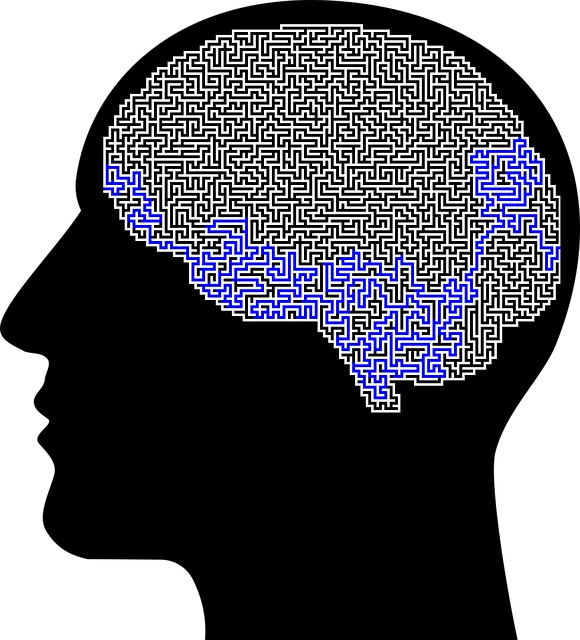The Kaiser Permanente mental health center in Westminster employs a comprehensive, holistic approach to risk assessment and harm minimization, prioritizing patient safety and security. Through rigorous evaluation of physical, psychological, and emotional dangers, healthcare professionals implement tailored strategies focusing on emotional regulation, mood management, and crisis intervention. This multi-faceted strategy integrates evidence-based practices like Mindfulness Meditation, proactive planning, data collection, continuous improvement through open communication, and regular staff training to foster a supportive environment for healing and long-term recovery.
At the Kaiser Permanente Mental Health Center Westminster, risk assessment and harm minimization planning are paramount for ensuring patient safety. This comprehensive guide explores the intricate process of risk assessment at the center, delving into key components of harm minimization strategies. We provide practical insights on implementation, monitoring, and best practices, highlighting the importance of continuous improvement in risk management. Discover how these approaches empower healthcare professionals to deliver exceptional care while mitigating potential risks.
- Understanding Risk Assessment at Kaiser Permanente Mental Health Center Westminster
- Key Components of Harm Minimization Planning
- Strategies for Effective Implementation and Monitoring
- Best Practices and Continuous Improvement in Risk Management
Understanding Risk Assessment at Kaiser Permanente Mental Health Center Westminster

At Kaiser Permanente Mental Health Center Westminster, risk assessment is a cornerstone of their comprehensive care approach. It involves meticulously evaluating and understanding potential hazards and vulnerabilities within the mental health treatment environment. By adopting a holistic perspective, the center identifies not only physical dangers but also psychological and emotional risks that may impact patient well-being. This includes assessing factors such as suicide risk, self-harm, and the potential for unexpected emotional outbursts, which are all critical aspects of mental health awareness.
The process is designed to ensure the safety and security of every individual seeking treatment at the center. Through rigorous risk assessment techniques, healthcare professionals can implement tailored harm minimization strategies. These strategies focus on emotional regulation and mood management, aiming to create a supportive atmosphere that fosters healing while mitigating potential risks. By prioritizing these measures, Kaiser Permanente Mental Health Center Westminster demonstrates its commitment to providing exceptional care in a controlled and secure setting.
Key Components of Harm Minimization Planning

Harm Minimization Planning at Kaiser Permanente mental health center Westminster involves a multi-faceted approach designed to proactively identify and mitigate risks associated with various client populations. This strategic process is underpinned by several key components that serve as guiding pillars for delivering effective care. One of the core elements is Crisis Intervention Guidance, which equips staff with the skills to respond swiftly and compassionately during moments of heightened distress, thereby preventing escalations.
Additionally, incorporating Emotional Healing Processes into the planning framework ensures a holistic approach to mental well-being. This involves fostering an environment that cultivates emotional safety and encourages clients through various evidence-based practices such as Compassion Cultivation Practices. By integrating these methods, Kaiser Permanente mental health center Westminster aims to not only minimize potential harms but also to enhance long-term recovery and resilience among its clientele.
Strategies for Effective Implementation and Monitoring

Implementing effective risk assessment and harm minimization strategies requires a structured approach tailored to the unique needs of a Kaiser Permanente mental health center, such as the Westminster location. A key strategy is integrating evidence-based practices like Mindfulness Meditation into therapeutic routines. This not only enhances patient well-being but also provides tools for self-regulation, stress reduction methods, and trauma support services—all crucial elements in mitigating potential risks.
Regular monitoring and adaptive planning are essential components of successful risk management. By establishing clear metrics and data collection processes, the Westminster center can track progress, identify areas needing improvement, and promptly adjust interventions. This proactive approach ensures that strategies like Mindfulness Meditation remain relevant and impactful, fostering a safe and supportive environment for all patients, as evidenced by the center’s commitment to holistic mental health care.
Best Practices and Continuous Improvement in Risk Management

At the Kaiser Permanente mental health center Westminster, best practices in risk management involve a multi-faceted approach. This includes regular reviews of existing protocols and policies to ensure they remain current and effective. Mental health professionals should continually update their knowledge on emerging trends and research related to patient safety and harm minimization. Implementing evidence-based strategies tailored to the specific needs of the patient population, such as those facing mental illness stigma reduction efforts, is crucial.
Continuous improvement requires a culture of open communication and feedback. Healthcare providers should encourage peer discussions, workshops, and training sessions focused on risk management planning for mental health professionals. By fostering an environment where lessons learned are shared and best practices are optimized, the center can enhance its ability to prevent issues like depression, promote positive patient outcomes, and ensure the highest standards of care.
Risk assessment and harm minimization planning are vital components in ensuring the safety and well-being of patients at the Kaiser Permanente Mental Health Center Westminster. By understanding the key elements, implementing effective strategies, and adopting best practices, the center can continuously improve its risk management approach. This comprehensive framework not only protects patients but also fosters a supportive and healing environment, making it a leader in mental health care.






